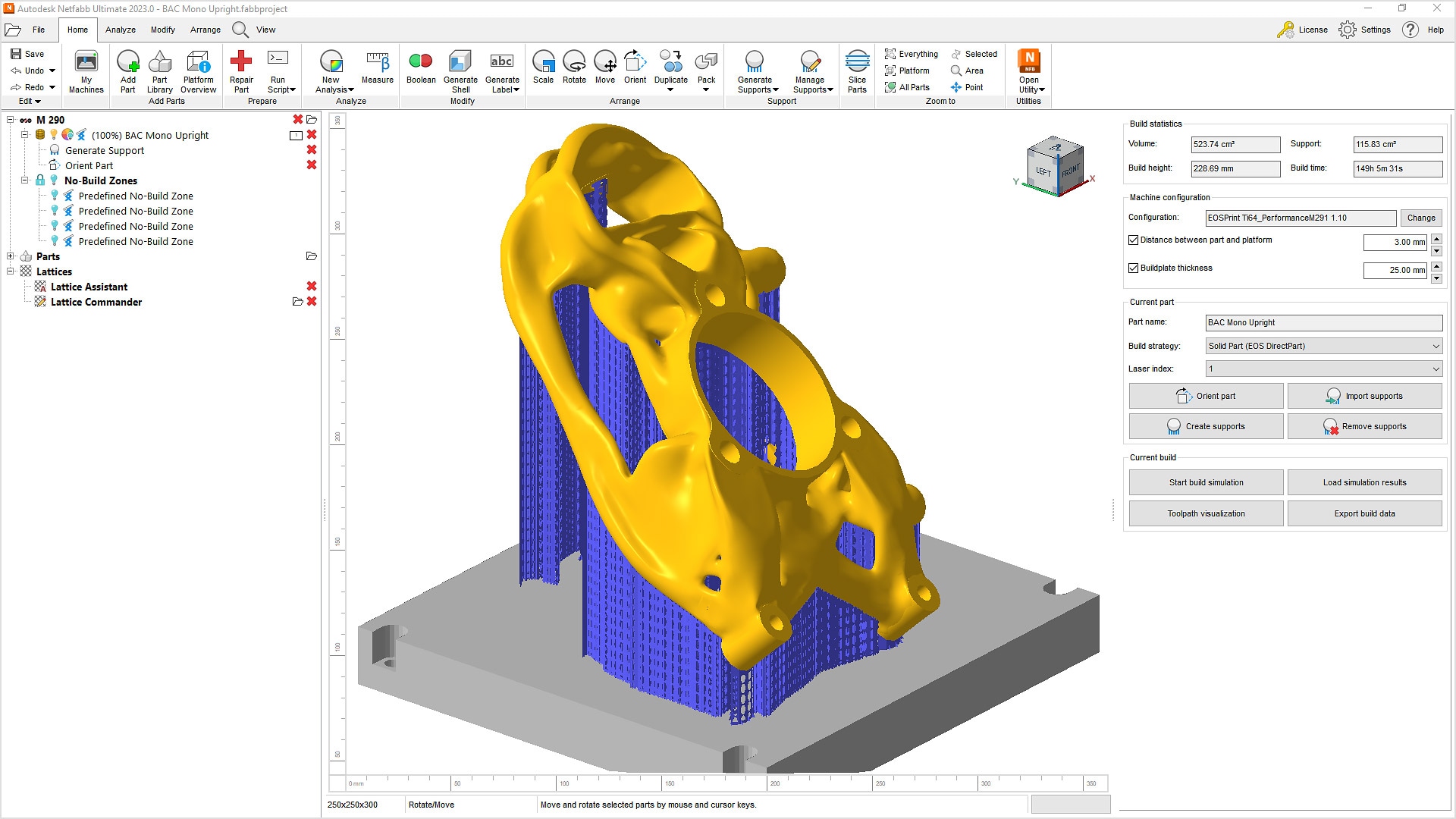& Construction

Integrated BIM tools, including Revit, AutoCAD, and Civil 3D
& Manufacturing

Professional CAD/CAM tools built on Inventor and AutoCAD
Explore features of Fusion with Netfabb software to optimise additive manufacturing setups. Simulate thermo-mechanical history of additive builds with Netfabb Local Simulation.
Arrange many parts in the build space in as little space as possible, while avoiding collisions and interlocking
Define build strategies and toolpath parameters for maximum surface quality, part density and speed
NETFABB LOCAL SIMULATION ONLY
Use multiscale modelling to simulate the thermal and mechanical response of parts and help reduce build failures with metal powder bed fusion (MPBF) and direct energy deposition (DED)
Mitigate excessive distortion during powder bed processing with customisable supports
Reduce configuration time on machine setup with pre-loaded additive manufacturing machines
NETFABB LOCAL SIMULATION ONLY
Detect temperature history, deformation, stress and strain, along with support structure failures and recoater blade interference
Import, analyse and repair models
Import models from a variety of CAD formats and use repair tools to quickly correct errors. (video: 3 min.)
Modify models for production
Get your models ready for production by adjusting wall thicknesses, smoothing rough areas and more. (video: 2:26 min.)
Configurable build supports
Identify areas that require support and use semi-automated tools to generate support structures. (video: 1:47 min.)
Automatic packing
Use 2D and 3D packing algorithms to optimally place parts within the build volume.
Report generation
Create custom reports that include critical information for manufacturing and quoting.
Additive toolpaths
Develop build strategies and define toolpath parameters for maximum surface quality, part density and speed.
Automation
Automate common preparation tasks including import, analysis, repair, packing, slicing and tool pathing.
Internal lattice structures
Create lightweight parts with performance characteristics specific to your application.
Machine workspaces
Select from the most popular additive manufacturing machines to configure the Netfabb workspace to your process.
Solutions for machine manufacturers
Netfabb works with a range of OEMs to create integrated printing experiences configured for specific machines.
Predict the thermomechanical response of additive parts during the MPBF and DED manufacturing processes.
Fast, predictive simulation
Adaptive meshing and the physics-based, multiscale approach help keep processing time low and accuracy high. (video: 1:06 min.)
MPBF
Use multiscale modelling to predict the thermal and mechanical response of parts and help reduce build failures.
DED
Simulate full builds for both powder-fed and wire-fed DED processes with Netfabb Local Simulation.
Small-scale simulation
Generate PRM files based on chosen material and process parameters for increased accuracy.
Part-scale simulation
Simulate the additive manufacturing process for powder bed fusion to identify potential causes of build failures.
Simulate the entire build plate
Capture interactions between parts and the distortion of the build plate.
Simulate stress relief
Design appropriate heat treatment cycles by inputting the temperature versus time curve of the desired process.
Detect recoater interference
Identify possible build failures with powder bed processes that may cause equipment damage.
Avoid support failure
Predict support failure to aid in the design and placement of support structures.
Predict part distortion
Predict how metal additive manufacturing parts will deform to help reduce build failures.
Account for part/powder interaction
Model the conduction of energy into the loose powder to increase your model’s accuracy.
Calculate residual stresses
Accurately calculate residual stresses and strains built up during the additive manufacturing process to identify likely regions of failure.
Simulate response after wire-cutting
Simulate the mechanical response of a deposited part after removal from the build plate to calculate the final distortion.
Predict hot spots and lack of fusion
Apply multiscale modelling to predict regions of a build that get too hot or not hot enough during processing.
Compensate for distortion
Automatically compensate geometries based on simulation results to achieve the desired shape when printed.
STUDY
Experimental data shows improved accuracy with the explicit modelling of loose powder and the interaction between parts.
STUDY
Netfabb simulates the delamination of the part from the region where the support structure on a component experienced failure.
STUDY
Netfabb Simulation accurately calculates temperature and distortion during the powder bed fusion process to within 5% error of the measurement.
